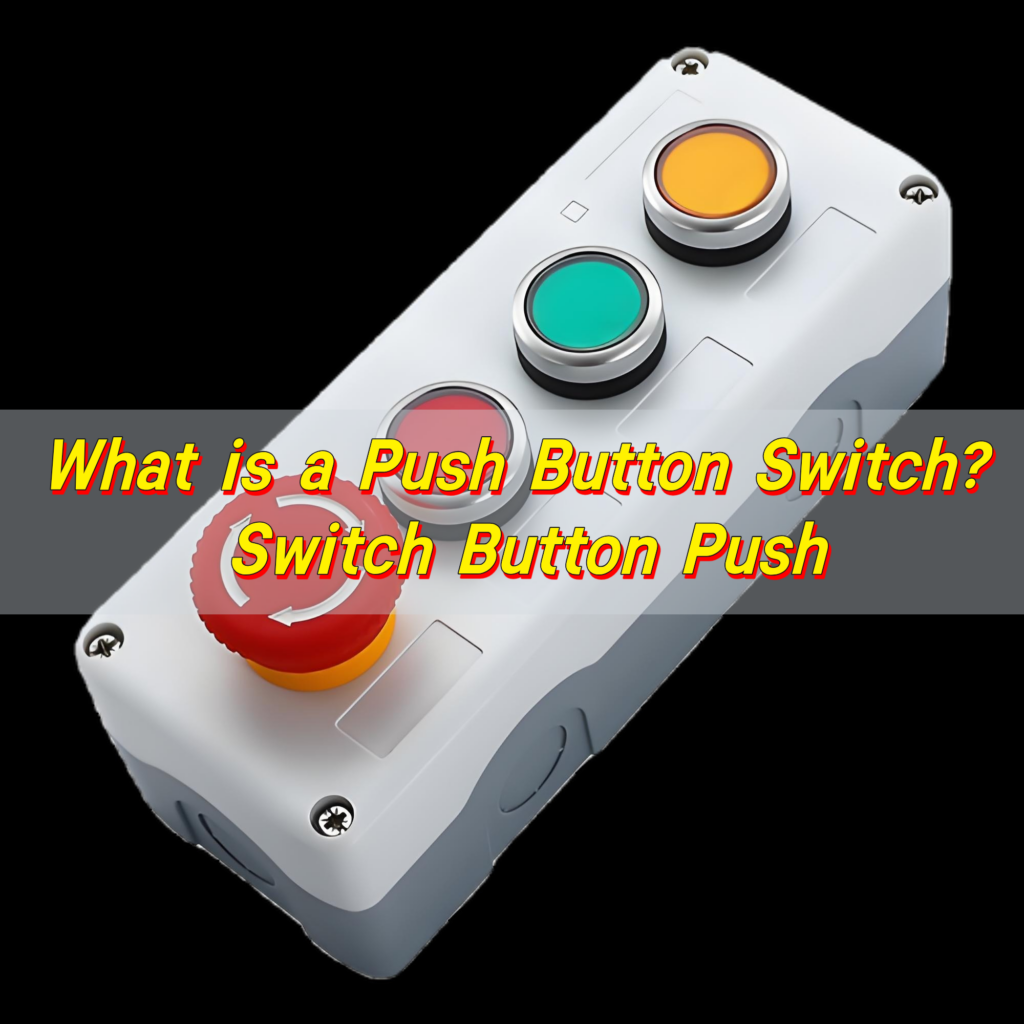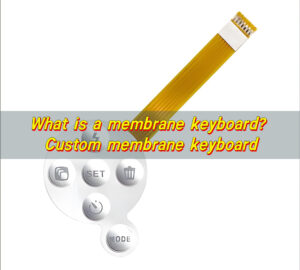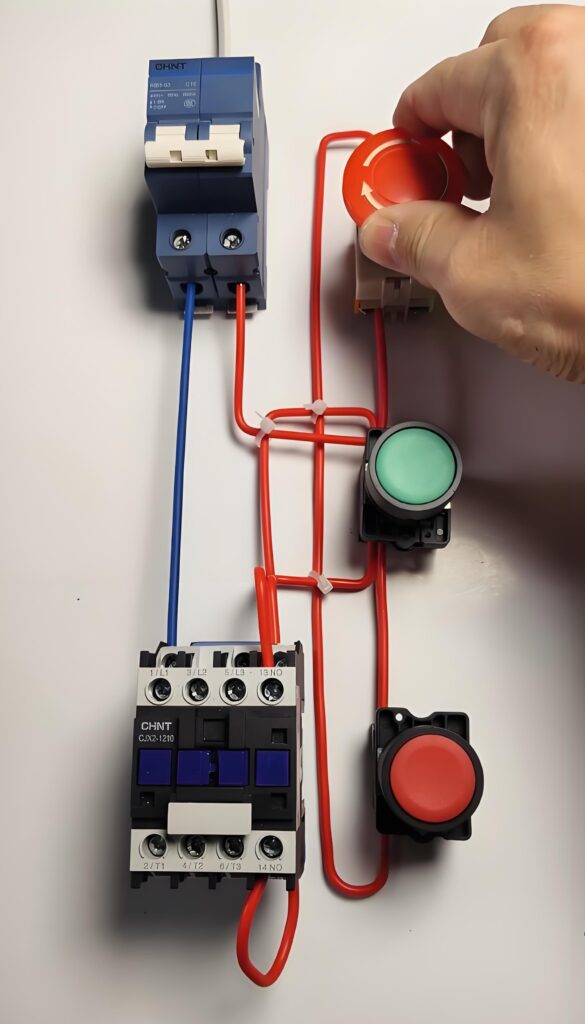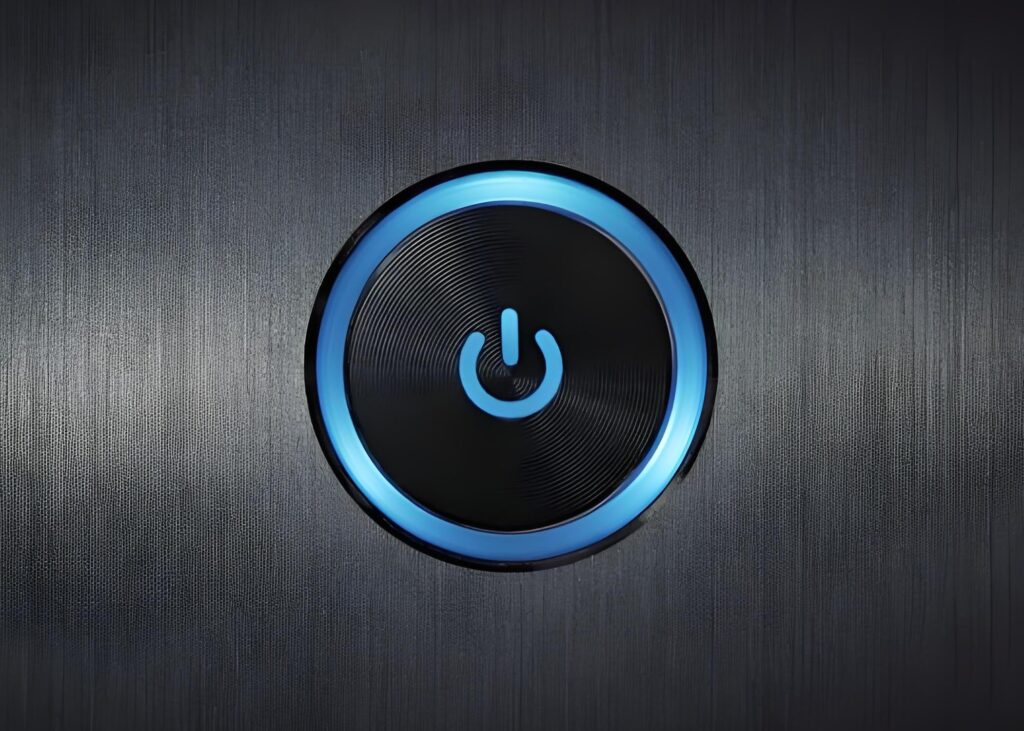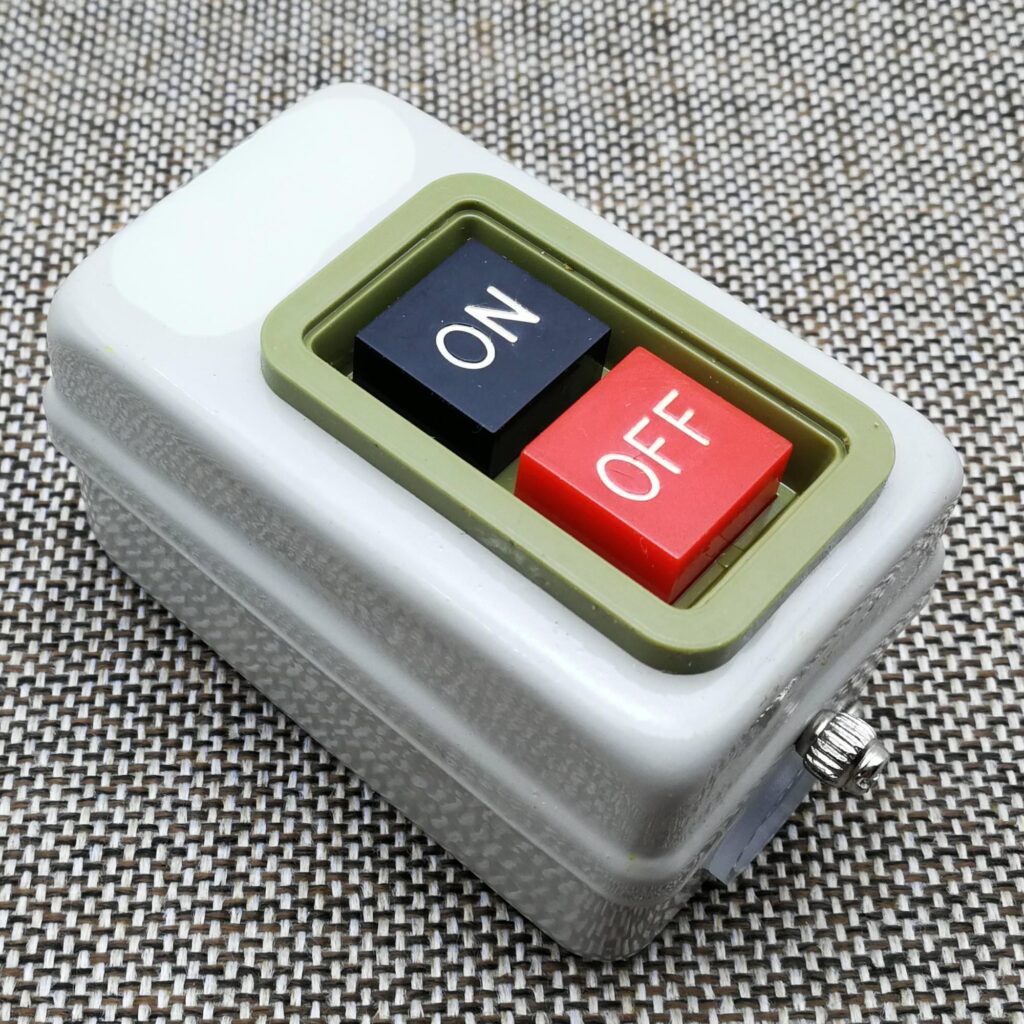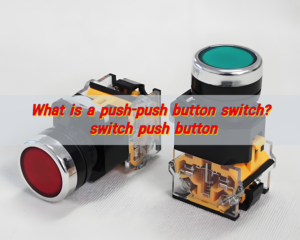Push button switch is an electronic component that switches a circuit on and off by pressing, while a metal dome switch uses the elastic deformation of a metal dome to switch the circuit on and off. Metal dome switches are widely used in membrane switches and touch switches for their good tactile feedback and durability.
What is a push button switch?
Push button switch is a mechanical device used to control an electric circuit. When pressed, it either opens or closes a connection, depending on its design. It’s a basic but reliable way to manage electrical current. From home light systems to industrial machines, these switches are everywhere.
You can recognize them by their characteristic round or square cap and tactile feedback. Some push button switches are momentary, meaning they return to their default position after being released. Others stay in place and change the state of the circuit permanently until pressed again.
Push button switches come in many forms:
- Push button switches for lights in homes and offices.
- Emergency push button switches in factories or elevators.
- Push button ignition switches in cars.
- Tactile push button switches in small electronics.
- Waterproof push button switches for outdoor or wet environments.
Each one is tailored to meet specific needs. Whether it’s safety, convenience, or design, the right push button can make a real difference.
How to wire a push button switch?
Wiring a push button switch isn’t hard, but it must be done right.
When wiring a push button switch, first determine the type (normally open/normally closed, self-locking/non-self-locking). For a single-control non-self-locking normally open button, connect the live wire of the power supply to one end of the button, and the other end to the load (such as a lamp), and the other end of the load to the neutral wire, press to connect, and release to disconnect. The self-locking button is directly connected in series in the circuit, press to lock to connect, and then press to disconnect.
During start-stop control, the start button (normally open) and the stop button (normally closed) cooperate with the contactor, and the start button is connected in parallel with the contactor to assist the normally open contact to achieve self-locking. Disconnect the power supply before operation, identify the contact identification (NO/NC), select the appropriate wire, ground the metal casing, and test it with no load after connection.
How to put a push button starter switch?
Installing a push button starter switch in a vehicle or motor system is both practical and stylish. It eliminates the need for a traditional key and gives instant access to power with just one touch.
Here’s a general process:
Choose the right switch. Disconnect the battery. This ensures safety during installation.
Locate ignition wires. Connect the wires. The push button switch will tap into the ignition circuit. Most setups need the switch to link the battery to the ignition wire only when pressed.
Secure the button. Mount it on the dashboard or another easy-to-reach area.
These switches are very popular. Not only do they look high-tech, but they also add a sleek, modern touch.
What is a momentary push button switch?
Momentary push button switch works only while it’s being pressed. The circuit opens or closes temporarily and reverts as soon as pressure is removed. These switches are common in keyboards, calculators, power tools, and control panels.
They’re essential when you need short bursts of input. For example: Ringing a doorbell?Resetting a device.
Unlike a toggle or on/off push button switch, a momentary one is all about timing and user control. If you remove your finger, the function stops immediately. It offers instant control without the need to remember to turn it off.
What is the difference between a push button and a momentary switch?
All momentary switches are push buttons, but not all push button switches are momentary.
Momentary switch only stays active when pressed. Once released, it resets.
Standard push button switch may latch — staying in a new position until pressed again.
Think of a lamp push button switch: if it toggles on and off with each press, it’s not momentary. But if it lights up only when pressed and goes off when released, that’s a momentary switch.
If you need constant power without holding the button, go for a latching switch. If you want instant, temporary control, the momentary type is perfect.
How do push button switches work?
Inside a push button switch, a set of contacts either connect or disconnect when you press the button.
Here’s how it functions:
Pressing the button moves the internal contacts.
This completes or breaks the circuit, depending on the switch design.
In some cases, an internal spring returns the button to its default state.
Some switches use tactile domes or snap-action components for better feedback. Others have rubber or metal domes under the surface. This tactile sensation confirms your action instantly.
For advanced models like the illuminated push button switch, pressing the button also turns on an indicator light, letting you know the switch has been activated.
What are the advantages of push button switches?
Push button switches offer a range of benefits, making them a go-to choice for many industries and applications.
- Ease of use. Press and go.
- Compact size. Fits into tight spaces easily.
- Variety. From small push button switches to large industrial types.
- Fast response. Instant control, often with tactile feedback.
- Safe. Many switches, like the emergency push button switch, are designed for quick shutdowns.
- Affordable. The push button switch price is usually budget-friendly.
- Long-lasting. Especially tactile and snap-action types that endure heavy use.
With options like waterproof push button switches, you also get durability in tough conditions — outdoors, wet environments, or dusty work areas.
What are the disadvantages of push button switches?
While push button switches offer many strengths, there are a few limitations to consider.
- Limited range. They control only what they’re wired to.
- Can wear out. Repeated use may affect tactile feedback over time.
That said, with proper design, placement, and quality selection, these drawbacks are minor. Choosing the right push button switch plates or push button switch covers can reduce accidental usage and extend lifespan.
What is a push button switch used for?
Push button switches are incredibly versatile. They’re used in nearly every industry.
- Lighting. From home interiors to architectural features.
- Automobiles. Starting engines, controlling signals.
- Consumer electronics. In toys, gadgets, and appliances.
- Industrial control. Emergency stops, machine operation.
- Medical equipment. For precise control in sensitive devices.
They’re also common in user interfaces. Whether it’s activating a microwave or a gym treadmill, the push button switch is the core interaction element. Its tactile feedback provides comfort and assurance to users of all ages.
Conclusion:
Push button switches are a smart choice for professionals and amateurs alike because of their ease of installation, low cost, and long life. With the right wiring and setup, you can change the way your system operates with the push of a button.
If you’re looking for premium push button switches or want to explore custom designs for your product. Contact us at sales@metal-domes.com


